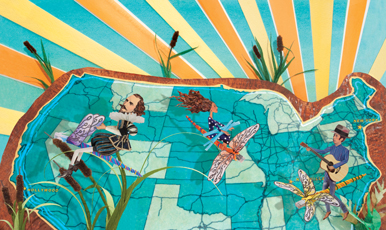
Every budding writer, starving artist, or aspiring app developer who’s ever pulled espresso shots or waited tables knows the stress of making ends meet. But the digital revolution has spawned new opportunities—including more geographic autonomy—for the 40 million people who comprise the “creative class.”
More than one-third of Americans work in such creative fields as arts and entertainment, engineering, education, and architecture, according to social scientist Richard Florida, author of the 2002 bestseller, The Rise of the Creative Class. Together, they drive an economic engine powerful enough to shape neighborhoods in hundreds of American regions.
The ubiquity of the Internet means that musical hopefuls no longer need to live in Nashville or New York City. The next Broadway smash might be penned in Detroit and Provo, Utah, could emerge as the hottest new tech hub. All it takes is a wireless connection, collaborators, and space—a relatively affordable commodity in post-industrial cities with an abundance of empty warehouses, says Linda Bloss-Baum, who teaches a class on the subject in AU’s Kogod School of Business.
It’s a story of geographic repurposing and new opportunity being retold across the country, including in the resurgent Union Market area of Washington, DC—which checks in at number nine on Florida’s “creativity index” of US cities.
Required writing assignments of the analog kind, with pen and paper, make Bloss-Baum’s course unusual. “I really enjoy watching the evolution of the students from beginning to end of the semester. They come in not knowing exactly what to expect. It’s a pretty esoteric course, there’s a fair amount of writing and speaking involved, and I think for some of the business students that’s a little out of their comfort zone,” says Bloss-Baum, SOC/BA ’91, who was named adjunct faculty member of the year in April.
The class touches on how technology—file sharing, Internet radio, live streaming, and more—has transformed the ways people make, sell, and consume creative content. In addition to Florida’s book, required reading includes The Warhol Economy by Elizabeth Currid-Halkett.
The class is so popular that it has generated a waiting list four years running. Helping creative types hone their business skills is one reason it attracts its share of performing arts majors and School of Communication students. On the flip side, future titans of tech and industry benefit from learning about creativity—a skill that’s increasingly prized by employers.
If students take nothing else from the course, Bloss-Baum hopes they remember their next evening of Netflix and chill was made possible by the dreams and exertions of human beings with bills to pay.